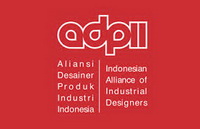Perancangan furnitur sebagai fasilitas belajar anak autisme yang mengimplementasikan prinsip Universal Design
Abstract
Education is an effort to improve human resource quality and growth in a country, especially for those who have disabilities. According to the Central Bureau of Statistics, in 2020, as many as 5% of Indonesia’s population are disabled. Autism is one of the pervasive intellectual disabilities in children that hinders the development of cognitive, language, behavior, communication, and social interaction. In 2019, the work vacancy for the disabled only covers 0.28% of the general job opportunity in Indonesia and further decreased by 0.1% in 2020. Therefore, to improve the human life quality of the disabled, an appropriate education system and facilities that apply Universal Design compliance to their needs were essential. The uses 5 steps of Design Thinking methods consist of Empathize, Define, Ideate, Prototype, and Test methods are hopefully will resolve the problem systematically, in detail, and accurately. The result produced multifunction furnitur by applying FURNURTURE, which stands for Furniture and Nurture, as the design concept. FURNITURE has several functions, namely; an education facility, a therapeutic facility, and storage by applying the Universal Design principle. Hopefully, the design, product, and design principles could stand as a model for other autism educational facilities and services.
Keywords
Full Text:
PDFReferences
Amanudin, A. (2019). Pengantar Pendidikan. In P. S. Permana, S. Anwar, & Alinurdin (Eds.), Pengantar Pendidikan (pp. 1–198). Tangerang Selatan: Unpam Press. Retrieved from http://eprints.unpam.ac.id/8657/
American Psychiatric Association. (2013). Dianostic and Statistical Manual of Mental Disorders (5th ed.). Washington DC: American Psychiatric Publishing. Retrieved from http://repository.poltekkes-kaltim.ac.id/657/1/Diagnostic and statistical manual of mental disorders _ DSM-5 %28 PDFDrive.com %29.pdf
Badan Pusat Statistik. (2021a). Akses Pekerjaan Penyandang Disabilitas Makin Sedikit. Retrieved June 2, 2022, from https://databoks.katadata.co.id/datapublish/2021/07/09/akses-pekerjaan-penyandang-disabilitas-makin-sedikit
Badan Pusat Statistik. (2021b). Hari Disabilitas Internasional. Retrieved June 2, 2022, from https://talaudkab.bps.go.id/news/2021/12/03/74/hari-disabilitas-internasional.html
Both, T. (2010). An introduction to design thinking: Process guide. Retrieved from https://dschool.stanford.edu/resources/the-bootcamp-bootleg
Brand, S. T., & Dalton, E. M. (2012). Universal Design for Learning: Cognitive Theory into Practice for Facilitating Comprehension in Early Literacy. Public Policy Online, 1–19. Retrieved from https://eric.ed.gov/?id=EJ979433
Budiman, H., Numan, I., & Idham, N. C. (2021). Freehand Drawing and Architectural Expression. Journal of Architectural Research and Design Studies, 5(1). https://doi.org/10.20885/JARS.VOL5.ISS1.ART5
Dewi, I. A. G. B. P., & Indrawati, K. R. (2014). Perilaku Mencatat dan Kemampuan Memori pada Proses Belajar. Jurnal Psikologi Udayana, 1(2), 241–250. https://doi.org/10.24843/JPU.2014.V01.I02.P03
Gaines, K., Bourne, A., Pearson, M., & Kleibrink, M. (2016). Designing for Autism Spectrum Disorders. New York: Routledge. Retrieved from https://play.google.com/store/books/details/Kristi_Gaines_Designing_for_Autism_Spectrum_Disord?id=thMzDAAAQBAJ
Goldsmith, S. (2000). Universal design: a manual of practical guidance for architects (First). Woburn: Architectural Press.
Golicnik, B., & Marusic, D. (2012). Behavioural Maps and GIS in Place Evaluation and Design. Application of Geographic Information Systems. https://doi.org/10.5772/47940
Hu, M. M., & Wu, M. (2012). The effect of concept mapping on students’ learning achievements.pdf. 10(2), 134–137. Retrieved from http://www.wiete.com.au/journals/WTE&TE/Pages/Vol.10, No.2 %282012%29/07-Hu-M.pdf
Kementerian Pemberdayaan Perempuan dan Perlindungan Anak. (2018). Hari Peduli Autisme Sedunia: Kenali Gejalanya, Pahami Keadaannya. Retrieved June 2, 2022, from https://www.kemenpppa.go.id/index.php/page/read/31/1682/hari-peduli-autisme-sedunia-kenali-gejalanya-pahami-keadaannya
Kusuma, G. H. A., & Oktana, L. (2012). Sistem Identifikasi Penyakit Autis Anak Berbasis Web - Neliti. Jurnal TICOM, 1(1). Retrieved from https://www.neliti.com/publications/93046/sistem-identifikasi-penyakit-autis-anak-berbasis-web
Pemerintah Pusat. (2020). PP No. 13 Tahun 2020 tentang Akomodasi yang Layak untuk Peserta Didik Penyandang Disabilitas [JDIH BPK RI]. Retrieved June 2, 2022, from https://peraturan.bpk.go.id/Home/Details/132596/pp-no-13-tahun-2020
Peña, W. M., & Parshall, S. a. (2001). Problem Seeking (4th ed.; S. F. de Niño, Ed.). New York: John Wiley & Sons, Inc.
Postell, J. (2012). Furniture Design (Second). New Jersey: John Wiley & Sons, Inc.
Rubin, J., & Chisnell, D. (2011). Handbook of usability testing (2nd ed.; B. Elliott, M. Spears, J. James, E. Charbonneau, & M. B. Wakefield, Eds.). Indiana: Wiley Publishing, Inc. Retrieved from https://www.wiley.com/en-gb/Handbook+of+Usability+Testing%3A+How+to+Plan%2C+Design%2C+and+Conduct+Effective+Tests%2C+2nd+Edition-p-9780470185483
Wardani, L. K. (2011). PERANCANGAN FURNITUR PERKANTORAN (Proses Desain, Manufaktur, Distribusi, dan Konsumsi). Dimensi Interior, 8(1). https://doi.org/10.9744/INTERIOR.8.1.29-37
DOI: https://doi.org/10.24821/productum.v5i2.7333
Refbacks
- There are currently no refbacks.
p-ISSN 2477-7900 | e-ISSN 2579-7328

This work is licensed under a Creative Commons Attribution 4.0 International License.
Like & Follow Us










